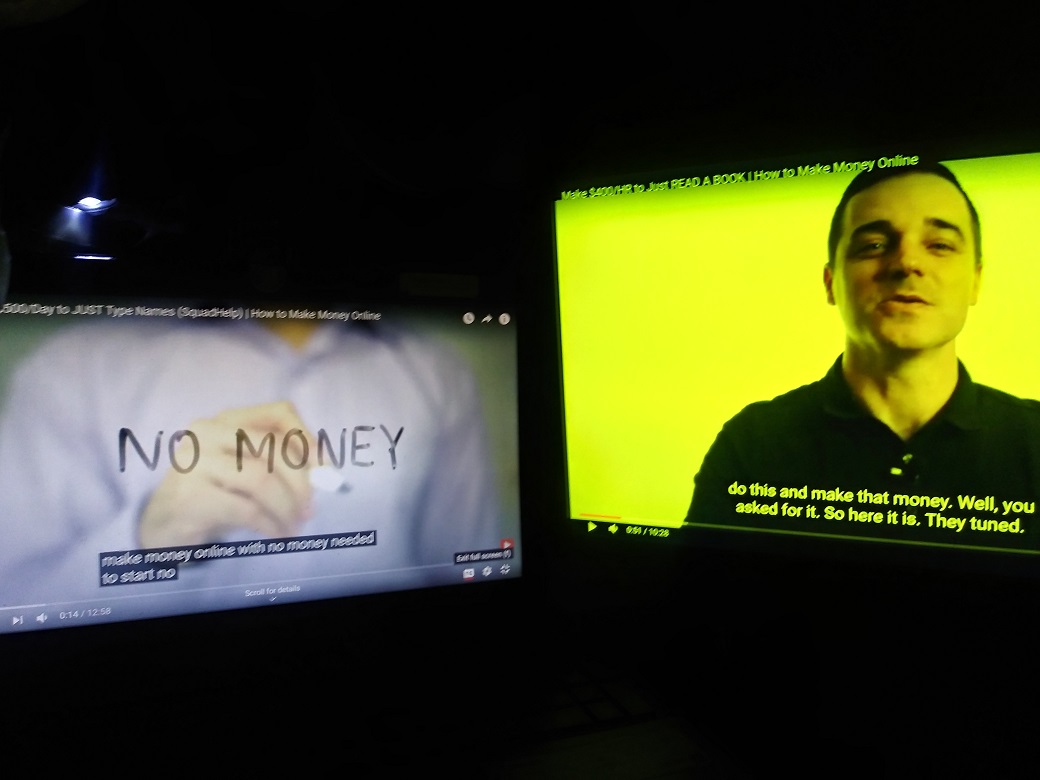From eco-friendly gift wrapping to sustainably sourced trees, there are plenty of ways to eat, drink, be merry AND be a friend to the planet.
Christmas—despite its biblical origins and self-professed giving spirit—is an orgy of consumption. The holidays see more food, more drinks, more shopping, more gifts, more travel and more human-gatherings than any other time of the year. It also sees more garbage, waste and senseless squandering of the earth’s depleting resources. Tis the season, am I right?
This year, take a moment to turn down the Michael Bublé and think about the impact your festivities are having on the environment. From eco-friendly gift wrapping to sustainably sourced trees, there are plenty of ways to eat, drink, be merry and be a friend to the planet.

The Tree
Real and plastic Christmas trees are both evergreen, but they’re also both never green. Get it? That was a fancy way of saying that whether your tree was cut down at a farm or created in a factory, you’re increasing your personal carbon footprint. Which of the two is less bad is an age-old question, with studies showing that the difference it so small, it really doesn’t matter which you choose. Here’s what science has to say: the American Christmas Tree Association (this is a real thing) did a comparative life cycle assessment in 2010 (it’s 210 pages), and found that “the impact of the tree life cycle, for all scenarios, is less than 0.1% of a person’s annual carbon footprint and therefore is negligible within the context of the average American’s lifestyle.”
1. If you opt for a real tree, look out for FSC Certification. This will confirm that your tree has been sourced sustainably.
2. When the holidays are over and it’s time to kick your festive decor to the curb, seek out local council recycling schemes that repurpose or replant trees.
3. If a fake tree is more your style, try picking up a secondhand one from an Internet marketplace like Kijiji or Facebook.
4. Or, since Christmas is sort of an annual thing, you could consider investing in a high-quality artificial Christmas tree that will last a lifetime, rather than a cheap one you’ll have to soon replace.

The Lights
Your best bet: skip them all together and light a bunch of soy candles instead. But if you aren’t interested in being the single light-less Scrooge on your street, you can make these small changes to your yearly light set-up.
5. Use LED lights on your home and your Christmas tree. LED lights use about 80-90% less energy than traditional light bulbs, which means you’re doing your electricity bill and Mother Nature a favour.
6. Put your lights on a timer so that they aren’t wasting electricity when you drink too many rum and eggnogs and forget to turn them off before bed.

The Cards
A thoughtful Christmas card is the perfect way to show a distant friend or relative a little love over the holidays. But instead of sending a physical card in the mail—Think of the paper! Think of the delivery emissions!—
7. Design an e-card, write an email (add festive emoji!) or simply give someone a “Merry Christmas” FaceTime call. I promise they’ll appreciate the message just as much.
8. Save the cards you receive and cut them into holiday gift wrapping tags for next Christmas.

The Wrapping Paper
The easy answer would be to stop giving physical gifts all together. Instead of buying plastic toys and brand new pieces of technology, you could gift everyone on your shopping list a tree! It’s a charming idea—and at $4.00 a piece, you should consider it—but it’s not an entirely realistic goal for everyone. So if you’re going to to be wrapping gifts this season, here are some of the ways to reduce your waste.
9. Skip the wrapping paper. If you’re a parent, consider letting Santa leave small, organized piles of gifts for your children. They’ll start playing right away, and you can go back to sleep.
10. Buy something reusable — like this fabric gift wrap from Montreal-based brand La Petite Boite Co. — or consider wrapping your gifts in something reused, like newspaper.
11. Foil and glitter wrapping paper is pretty, but it can’t be recycled. If you’re going to buy wrapper paper, skip these options altogether. And also, it’s important to remember to remove all tape before tossing paper in the recycling bin.

The Food
Extravagant food displays are a hallmark of the holidays. Ensure that not a bite is destined for the trash by diligently planning and preparing the right amount—and the right type—of food.
12. Opt for turkey over roast beef. According to University of Michigan’s Centre for Sustainable Systems, for each serving of beef there are approximately seven pounds of carbon dioxide equivalents (beef production releases methane, a potent greenhouse gas). One serving of poultry, however, has just over one pound of carbon dioxide equivalents. Or, skip the meat altogether and try Lauren Toyota’s roasted cauliflower skillet, which comes basted with a savoury gravy and looks just as impressive as the real thing.
13. Let your guests serve themselves to ensure people only fill their plates with what they’ll actually eat. Bonus: you’ll end up with all the leftovers, instead of their plate scraps ending up in your garbage.
14. There are hundreds of things you can do with your leftover holiday food—and they aren’t all hot gravy sandwiches. Here are just 40 out-of-the-box ideas from Food Network Canada.

The Travel
Whether you’re escaping the Canadian cold or heading out of town to visit family, there’s a good chance you’re leaving home over the holidays. Here’s how you can avoid letting your travel plans spoil all the hard work you did to keep your carbon footprint down.
15. Carpool to family events and social gatherings. It cuts your carbon output, and makes the parking situation a whole lot easier.
16. According to The New York Times, “one round-trip flight between New York and California [generates] about 20 per cent of the greenhouse gases that your car emits over an entire year.” If you’re getting on an airplane, purchase a carbon offset to help balance it all out. Read more here.













term papers for sale https://bestessaysold.com/ – cheap custom research papers academic writing edit my paper pay for essay
buy nothing day essay https://buyingpaperdil.com/ – pay for essays paper writer writing a paper paper help
commander viagra dose viagra acheter du viagra sans ordonnance comment acheter du viagra acheter viagra sans ordonnance https://achetermedic.com/ – acheter du viagra en belgique le viagra
essay writer
essay format
https://writeessaywow.com/ – essay bot
can you take ibuprofen and tylenol
tylenol 3 with codeine
https://drugstoreonliner.com/tylenol.php – tylenol 3
trazodone medication
trazodone
https://drugstoreonliner.com/trazodone.php – trazodone 100 mg
what is cipro
cipro for uti
https://drugstoreonliner.com/cipro.php – cipro for uti
lexapro side effects
lexapro medication
https://drugstoreonliner.com/lexapro.php – lexapro withdrawal symptoms
xarelto generic
xarelto coupon
https://drugstoreonliner.com/xarelto.php – xarelto side effects
cymbalta side effects
cymbalta
https://drugstoreonliner.com/cymbalta.php – cymbalta medication
tylenol side effects
tylenol
https://drugstoreonliner.com/tylenol.php – what is tylenol
trazodone medication
trazodone dosage
https://drugstoreonliner.com/trazodone.php – trazodone 100 mg
what is cipro
cipro for sinus infection
https://drugstoreonliner.com/cipro.php – cipro for uti
lexapro generic
lexapro reviews
https://drugstoreonliner.com/lexapro.php – side effects for lexapro
xarelto
xarelto dosing
https://drugstoreonliner.com/xarelto.php – xarelto
cymbalta generic
cymbalta dosage
https://drugstoreonliner.com/cymbalta.php – cymbalta generic
hollywood casino play4fun
casino world
https://playcasinoslotsx.com – hard rock casino atlantic city
how to reduce weight
how to lose weight
https://weight-loss-blogs.com – best way to lose weight
how to make money from home
how to earn money online
https://make-money-blogs.com – how to make
cialis 10mg
canadian pharmacy cialis
https://paydailoanz.com/cialis.php – tadalafil cialis
tadalafil liquid
tadalafil online
https://paydailoanz.com/tadalafil.php – tadalafil 20mg
viagra vs cialis
levitra 20mg
https://paydailoanz.com/levitra.php – generic levitra
levitra
levitra
https://cbdoilnumber1.com/levitra/ – levitra online
buy cialis
cialis 5mg
https://cbdoilnumber1.com/cialis/ – cialis buy online
avira free antivirus avast antivirus download https://xantivirusx.com/ – eset antivirus uncensored naked dating reality show gay dating https://onlinedatingwow.com/ – free adult dating hgtv sweepstakes central travel channel sweepstakes https://supersweepstakesx.com/ – diy sweepstakes
free norton antivirus download 2019 windows defender antivirus https://xantivirusx.com/ – comodo antivirus speed dating interracial dating https://onlinedatingwow.com/ – dirty dating live shop your way sweepstakes contests and sweepstakes https://supersweepstakesx.com/ – travel channel sweepstakes
function of testosterone what is testosterone testosterone boost testosterone naturally testosterone in women
testosterone gel testosteron [url=https://pharm-usa-official.com/testosterone.php ] testosterona[/url] testosterone function testosterone pellets
https://pharm-usa-official.com/testosterone.php – low testosterone symptoms
testosterone supplements for men prime male testosterone booster testosterone definition testosterone cream testosterone levels by age
low testosterone in women testosterone side effects in men [url=https://pharm-usa-official.com/testosterone.php ] testosterone gel[/url] testosterone injections testosterone definition
https://pharm-usa-official.com/testosterone.php – testosterone replacement therapy
tadalafil lilly tadalafil 10 mg tadalafil 20mg tadalafil online tadalafil 20
sildenafil vs tadalafil tadalafil reviews [url=https://supertadalafil.com/ ] tadalafil liquid[/url] tadalafil citrate tadalafil 20 mg best price
https://supertadalafil.com/ – tadalafil cialis
tadalafil 5mg tadalafil prix generic cialis tadalafil cialis tadalafil tadalafil prix en pharmacie
tadalafil 10 mg tadalafil 10 mg [url=https://xtadalafilx.com/ ] generic tadalafil[/url] tadalafil 20mg prix tadalafil 20 mg best price
https://xtadalafilx.com/ – tadalafil cialis
tadalafil tablets buy tadalafil online buy tadalafil online tadalafil citrate tadalafila 20mg
tadalafil prix en pharmacie tadalafil 10mg [url=https://supertadalafil.com/ ] generic cialis tadalafil[/url] tadalafil tablets 20 mg cialis-impuissance tadalafil
https://supertadalafil.com/ – tadalafil 5mg
tadalafil 20 mg sildenafil vs tadalafil tadalafil 20mg buy tadalafil 20mg price purchase peptides tadalafil
tadalafil canadian pharmacy tadalafil cialis [url=https://xtadalafilx.com/ ] liquid tadalafil[/url] cheap tadalafil tadalafil generic
https://xtadalafilx.com/ – tadalafil dosage
healthy smoothies for weight loss weight loss supplements how to reduce weight healthy smoothies for weight loss randy jackson weight loss
apple cider vinegar weight loss weight loss medications [url=https://weight-loss-blogs.com/#]diet plans [/url] weight loss clinics near me how to lose weight fast
https://weight-loss-blogs.com – rachael ray weight loss
prix tadalafil buy tadalafil tablets tadalafil 5mg tadalafil powder what is tadalafil
cialis-impuissance tadalafil sildenafil vs tadalafil [url=https://supertadalafil.com/ ] tadalafil dosage[/url] tadalafil tablets 20 mg sildenafil vs tadalafil
https://supertadalafil.com/ – tadalafil dosage
adcirca tadalafil generic cialis tadalafil tadalafil 20mg generic cialis tadalafil best buys tadalafil biogaran 20 mg prix
tadalafil 20 mg best price buy tadalafil [url=https://xtadalafilx.com/ ] tadalafil dosage[/url] buy tadalafil tadalafil vs sildenafil
https://xtadalafilx.com/ – tadalafil 5mg
tadalafil online canadian pharmacy tadalafil generic vs cialis tadalafil 20mg tadalafil side effects tadalafil cialis
tadalafil 20mg tadalafil biogaran prix [url=https://supertadalafil.com/ ] tadalafil dosage[/url] what is tadalafil tadalafil 20 mg prix
https://supertadalafil.com/ – tadalafil dosage
cialis tadalafil tadalafil lilly 5mg prix tadalafil generic tadalafil prix tadalafil for women
tadalafil 20 mg tadalafil avis [url=https://xtadalafilx.com/ ] tadalafil 5mg[/url] tadalafil side effects tadalafil 20 mg wirkungsdauer
https://xtadalafilx.com/ – tadalafil liquid
jorge garcia weight loss weight loss supplements weight loss tips weight loss programs how to lose weight quickly
diet plan weight loss plan [url=https://weight-loss-blogs.com/#]lose weight fast [/url] healthy diet rachael ray weight loss
https://weight-loss-blogs.com – weight loss calculator
cialis online
[url=https://wowcialisnow.com/# ] cialis 20mg[/url]
https://wowcialisnow.com/# – buy cialis
romney coronavirus negative coronavirus florida coronavirus india coronavirus florida coronavirus stimulus package
actualitГ©s coronavirus coronavirus studie coronavirus india coronavirus statistics coronavirus france
https://pharm-usa-official.com/coronavirus/# – coronavirus news
http://afriquemidi.com/2017/11/27/rdc-olomide-porte-plainte-contre-gola/?unapproved=21063565&moderation-hash=c7d2d4b464f5a3fe443374907f93544a&bs-comment-added=1#comment-21063565
https://forums.africanhiphop.com/viewtopic.php?f=6&t=17592
https://businessactuality.com/cote-divoire-seraphin-akobe-monnez-apporte-sa-vision-de-sortie-de-crise-en-cote-divoire/?unapproved=1337973&moderation-hash=cd9803749d9b81e0028b86aa8edff930#comment-1337973
https://mestizos.cl/noticias/acusan-a-kendall-jenner-de-maltrato-animal/#comment-1279004
https://syrianpc.com/?p=9037&unapproved=58463&moderation-hash=bbb38c9b48376841905e059d20b1abf5&bs-comment-added=1#comment-58463